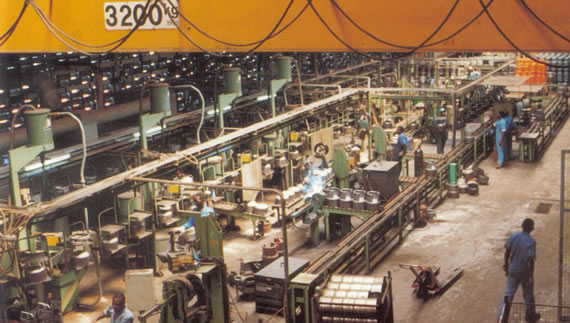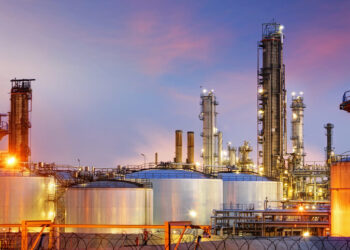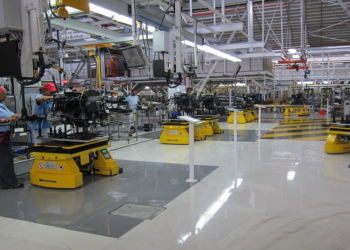Growth in Nigeria’s manufacturing sector shrank to 19.2 percent in the fourth quarter of 2014 as poor electricity supply, with high input cost, occasioned by depreciating naira continued to bite hard on businesses, among several other challenges.
The National Bureau of Statistics (NBS) presented the sector’s nominal GDP growth for fourth quarter of 2014 at 19.12 percent (year-on-year), some 13.28 percentage points lower than the 32.40 percent recorded in the corresponding period of 2013. Growth was also 2.46 percentage points less than the third quarter of 2014 estimate, the bureau said in its fourth quarter GDP report.
However, the sector contributed 9.11 percent to overall nominal GDP growth in the fourth quarter of 2014, up from 8.65 percent recorded in the fourth quarter of 2013 and 9.77 percent in the third quarter of 2014.
Thirteen manufacturing and allied activities make up Nigeria’s manufacturing sector whose capacity utilisation has gone up to 54 percent, from around 46 percent in the first half of 2013. The sector is also one of the fastest growing in the economy, recording about 15 percent real growth in the first three quarters of 2014.
But in January, the sector’s real GDP growth stood at 13.47 percent (year-on- year), down from 24.59 percent growth recorded in fourth quarter of 2013 and also 2.52 percentage points lower than the figure recorded in quarter three of 2014.
The NBS said the textile, apparel & footwear; food, beverage and tobacco; and cement drove growth of the sector, increasing by 30.74 percent, 5.16 percent, and 32.01 percent, respectively.
Oil refining, cement, food, beverages and tobacco; textile, apparel, and footwear; wood and wood products; pulp paper and paper products; chemical and pharmaceutical products all make up the thirteen manufacturing and allied activities in Nigeria.
The rest are non-metallic products, plastic and rubber products, electrical and electronic, basic metal and iron and steel; motor vehicles and assembly.
The fastest growing activities, according to NBS figures, were non-metallic products, textile, apparel & footwear and chemical and pharmaceutical products, growing at rates of 41.64 percent, 39.98 percent and 38.57 percent, respectively.
The NBS had shown in an earlier note on its 2014 economic review and 2015 – 2017 Outlook that the Nigerian industrial sector had a more erratic output than the other sectors last year, partially due to electricity output, and the need to import key manufacturing inputs.
The federal data office explained that growth rate in 2014 largely reflected the irregular output in 2013, which became much more consistent in the following year.
“Analysis of growth year-on-year shows ups and downs in industrial output during year 2014,” the NBS stated, adding that the largest component of the industry sector remains crude petroleum and natural gas.
Interestingly, however, textiles, apparel and footwear, the sector’s fourth largest contributor to GDP, was the main driver of positive growth in that year.


















